|
Displaying items by tag: will
The estate of Walter De Maria, the reclusive US artist who died last year without leaving a will, is now represented by Gagosian Gallery (FL, C3; FM, C2). Best known for large-scale installations such as "The New York Earth Room," 1977, and "The Lightning Field," 1977, in New Mexico, De Maria had six solo shows with the gallery during his lifetime. Gagosian is due to mark the new relationship by staging an exhibition of Minimalist sculptures and works on paper that were created by the artist between 1976 and 1990.
A forgotten son of Lucian Freud has been denied a share of his father’s vast fortune and will never know what was in the artist’s will after a High Court judge ruled its contents should remain a secret.
Paul McAdam Freud failed in his attempt to challenge the validity of a section of his father’s will which meant that only two people in the world would know the distribution of his £96 million fortune.
The artist, who died aged 88 in 2011 leaving behind at least 14 children, created a will, which after legacies and tax, left the remaining £42 million equally to one of his daughters Rose Pearce and his trusted solicitor and friend Diana Rawstron.
The late German recluse who hoarded a priceless art trove, some of it suspected Nazi loot, left two wills, a court said Tuesday, adding however that they "complement each other".
The Munich court did not reveal the beneficiary but said both documents named the same recipient or recipients of the spectacular estate of Cornelius Gurlitt, who died last week aged 81.
The art treasure of Gurlitt, the son of a Nazi-era art dealer, came to light last year, with many works believed to have been stolen or extorted from Jewish collectors, sparking claims by some of their descendants.
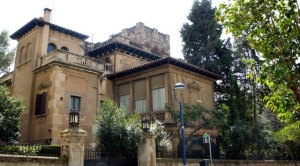
When the Spanish cotton baron Julio Muñoz Ramonet died in 1991, he left his illustrious art collection to the city of Barcelona. In 1995, to comply with the terms of his will, Barcelona’s city council established the Julio Muñoz Ramonet foundation, which oversees Ramonet’s properties and art collection.
However, Ramonet’s will and collection has been mired in legal controversy after his four daughters asked that their late father’s requests be annulled. The Spanish Supreme Court recently ruled in Barcelona’s favor, allowing the city to maintain control of Ramonet’s collection. Following the case, authorities visited Ramonet’s villa only to find that the most significant works in his collection had been removed. Authorities are now seeking masterpieces by Rembrandt, E Greco, Diego Velázquez, Sandro Botticelli and Francisco de Goya that were once displayed in Ramonet’s private residence.
While Ramonet’s daughters are not suspected of wrongdoing, a full inventory of Ramonet’s collection is being conducted.
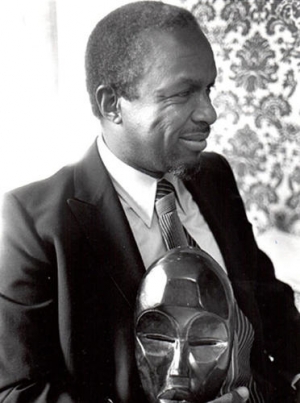
When Merton Simpson (1928-2013), a collector and dealer of African tribal art, passed away on March 9, 2013 he left behind a collection of museum-quality works said to be worth millions. Despite his illustrious holdings, Simpson’s family did not have enough money to give him a proper burial and his body is currently being held in a funeral home in Charleston, SC. Simpson’s son, Merton Simpson Jr., has started an email campaign asking friends of his father for contributions so that a proper funeral can be arranged.
Simpson’s care and art collection have been continuously prickly issues for his family with accusations of mismanagement and exploitation flying freely. Simpson, a celebrated abstract expressionist painter, was a pioneering champion of African art in the United States. Sadly, his remarkable archive and renowned collection have become a source of conflict between his friends, family, and staff members and most of his holdings are being detained in the Manhattan gallery, which he owned.
A will from 2011 was filed in Manhattan last week for Simpson naming his son, Merton Jr., as an executor and dividing most of his assets between his two sons, his brother, and a nephew. Simpson’s family is still waiting for the court to deem the 2011 will legally valid and to name an executor.
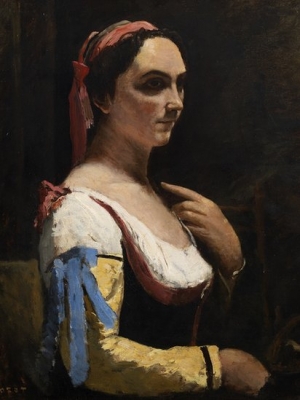
The late German-born British painter, Lucian Freud (1922-2011), specified in his will that his private art collection was to be donated to British museums rather than burdening his family with an inheritance tax after his death. The bequest is part of a British law that allows “acceptance in lieu” of taxes for authors, artists, and collectors.
Considered one of Britain’s greatest painters best known for his portraits and figurative works, Freud owned a number of important masterpieces including Jean-Baptiste Camille Corot’s (1796-1875) Femme á la Manche Jaune (The Italian Woman or Woman with Yellow Sleeve) and three bronze sculptures by Edgar Degas (1834-1917). It has been determined that the Corot painting, which has not been on public view in over 60 years, will go to the National Gallery in London and the Degas sculptures, Horse Galloping on Right Foot, La Masseuse, and Portrait of a Woman Head Resting on One Hand, will go to Somerset House’s Courtauld Gallery.
The donation is a thank you of sorts from Freud to Britain. The grandson of Sigmund Freud, Lucian escaped Hitler’s wrath when he came to England as a child. He became a British citizen in 1939.
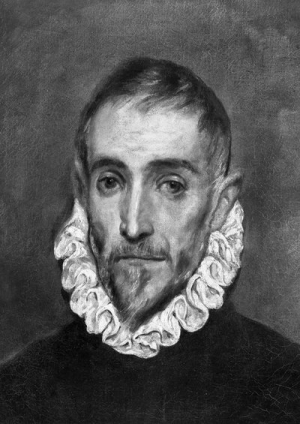
In 1932, Colonel Michael Friedsam, president of the New York City-based department store, B. Altman, bequeathed a huge portion of his estate to the Brooklyn Museum. It recently came to light that nearly a quarter of the 926 gifted works were fakes, misattributions or lacking in terms of quality. The Brooklyn Museum must now come up with a plan for the 229 pieces it no longer wants, which range from Dutch and Renaissance paintings to Chinese porcelains, jewelry, and furniture.
The museum is unable to sell the works for even the smallest profit because Colonel Friedsman’s will contains a clause stating that the museum must gain permission from the estate’s executor before deaccessioning works. Unfortunately, the last executor of Friedsman’s estate passed away in 1962. The Brooklyn Museum is currently working with the New York State attorney general’s office to maneuver around the clause. However, another clause in Friedsman’s will is proving problematic as it states that if the collection is broken up, the works should go to his brother-in-law and two friends. The museum has not yet started looking for the descendants of these three individuals as they are still working with the attorney general’s office to decide how to proceed.
The unwanted works are becoming more difficult to deal with, as the Brooklyn Museum is short on storage space. If the institution is unable to relieve itself of some of these works, they will be forced to rent additional storage spaces, which could cost the museum hundreds of thousands of dollars.
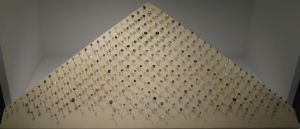
Over the course of 25 years in the 1980s and 1990s, Harry Rodman, a veteran gold refiner from New York City, and Alan Bronstein, a diamond dealer from New Jersey, assembled the Aurora Pyramid of Hope Diamonds, the most comprehensive collection of colored diamonds in the world. Featuring 295 rare gems, the collection became a point of controversy after Rodman died at the age of 99 in 2008.
Last year, Rodman’s heirs hit Bronstein with a lawsuit claiming that they were entitled to Rodman’s half of the diamond collection, which one appraiser valued at $14 million. The case became more complicated as Rodman, who made several wills in the last ten years of his life, was not only Bronstein’s partner, but also his stepfather. The legal dispute recently came to a close when Bronx Surrogate Judge Lee L. Holzman ruled that Bronstein fairly bought out Rodman’s interest in the Aurora Pyramid collection as well as another well-known grouping of diamonds known as the Aurora Butterfly of Peace.
The Aurora Pyramid of Hope, which is currently on loan to London’s Natural History Museum, has been exhibited at the Smithsonian Institution in Washington, D.C. and the American Museum of Natural History in New York. Bronstein plans to keep exhibiting the collection in museums for the benefit and enjoyment of the public.
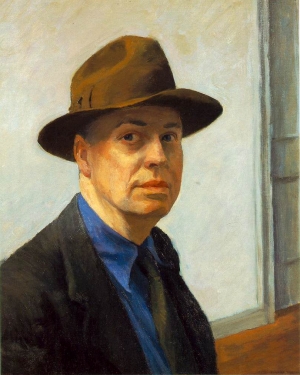
Last month the Edward Hopper House Art Center, located in the artist’s childhood home in Nyack, New York, dedicated one of its rooms to the late Reverend Arthayer R. Sanborn. A friend of the Hopper family, Sanborn led the First Baptist Church down the street from the Center and had lent the institution many works by Hopper his personal collection before his death in 2007. Sanborn also maintained the Hopper house when it fell vacant in the late 1960s.
Gail Levin, an art historian and foremost expert on Hopper, has stepped forward to object to Sanborn’s seemingly harmless recognition. Levin sent an e-mail to various news organization raising questions about how Sanborn came into his collection that included paintings, watercolors, and drawings by Hopper. Sanborn, who had eventually put more than 100 of works from his collection up for sale, claimed that Hopper and his wife, Josephine, had given many of the works to him. Levin rebutted this and said that during a conversation with Sanborn in the 1970s, he complained that Hopper had given him nothing, despite the fact that he was caring for him and his aging wife. Sanborn also claimed that he had purchased a number of works from the estate of Josephine Hopper, but under Mrs. Hopper’s will, it states that all of Hopper’s works were to go to the Whitney Museum of Art.
Officials at the Hopper House Center addressed Levin’s claims and said that the dispute was not of major concern as Sanborn has been deceased for the past five years, making her case difficult to pursue. The Center also values the Reverend’s contributions and isn’t looking to sever any ties with the Sanborn family.
|
|
|
|
|